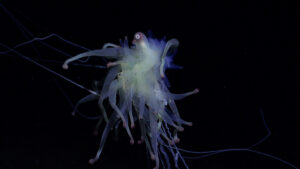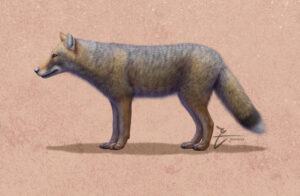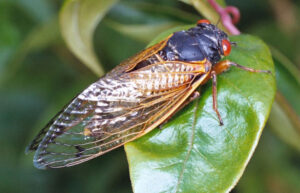October 20 marks International Sloth Day. Yes, for real. It’s a time to elevate public awareness and rally around conservation efforts focused on the world’s sleepiest arboreal mammal.
International Sloth Day was established in 2010 to amp up fundraising and educational campaigns, including antipoaching, environmental protection, and rescue/rehabilitation efforts. Since sloths are considered a keystone species, protecting and revitalizing undomesticated populations is critical to the ecosystems they inhabit. The Sloth Conservation Foundation states:
Protecting sloths and the habitat in which they live ultimately benefits a whole host of other species, from poison dart frogs to Great Green Macaws. Not all species, such as velvet worms, receive the same kind of attention and love that sloths receive. Conserving sloths leads to the protection of these lesser known species and the preservation of the beautifully complex ecosystems they are a part of.

The endangered three-toed pygmy sloth. Photo: Shutterstock
Of particular concern is the three-toed pygmy sloth, which is close to extinction. Only an estimated 100 pygmy sloths remain. Its population has declined 80% in the past decade, and scientists think that the tiny iteration may become extinct by 2022.
A few sloth facts for International Sloth Day

Photo: Janossy Gergely/Shutterstock
Below, a few quick facts about these peaceful, slow critters.
- Sloths are somnolent beasts, averaging 15 hours of sleep a day.
- Their long hooklike claws span between 8-10 cm.
- Three-toed sloths have two extra vertebrae in the neck which allows for 270° rotation of the head.
- Sloths are very strong swimmers thanks to their extended forelegs.
- The body composition of a sloth prohibits it from supporting much weight (hence the hanging upside down) — approximately 30-40% of a sloth’s body is composed of muscle tissue.
- Sloths are slow movers owing to their remarkably sluggish metabolic rate. At full speed, most travel less than 40m per day.
- In captivity, the average life expectancy is 16 years, but a female two-toed sloth at the Smithsonian Zoo in Amazonia lived to be 49 years old.
Sloths in nature
Today, the neotropical creatures live exclusively in the rain forests of Central and South America. The highest concentrations of sloths exist throughout Costa Rica and the Peruvian Amazon. Brazil’s Atlantic Forest houses five of the six species, but poaching, the exotic animal trade, and human encroachment have decimated much of Brazil’s sloth population.
When unencumbered by human activity, they are uniquely well adapted to the equatorial forests. On one Panamanian island, sloths comprise up to 70% of all arboreal biomass.
Sloth phylogeny and species

A three-toed sloth in Costa Rica. Photo: Shutterstock
Sloths fall under the Xenarthran superorder, a group of placental mammals thought to have evolved some 60 million years ago in South America. They are most closely related to anteaters and fall within the Order Pilosa, Latin for ‘hairy’.
The ancestral Pilosa node eventually branched off into the Suborder Folivora, Latin for ‘leaf eater’. They come in two families — two-toed and three-toed. Two-toed sloths are omnivores, subsisting on carrion, fruits, insects, leaves, and even tiny lizards. Three-toed sloths are entirely herbivorous — veganism’s poster-children. In all, there are six distinct species:
- Pygmy three-toed sloth (Bradypus pygmaeus)
- Maned sloth (Bradypus torquatus)
- Pale-throated sloth (Bradypus tridactylus)
- Brown-throated sloth (Bradypus variegatus)
- Linnaeus’s two-toed sloth (Choloepus didactylus)
- Hoffman’s two-toed sloth (Choloepus hoffmanni)
Two-toed sloths are slightly larger and prone to spend even more time hanging upside down than their three-toed cousins. An adult two-toed can weigh up to 8kg and measure 76cm, while three-toed adults average 4-5.5kg and measure 58-68cm.
Three-toed sloths alternate between hanging and sitting upright in the napes of tree branches. Owing to the fur patterns on its face, the three-toed sloth always looks like it’s cracking a smile.






